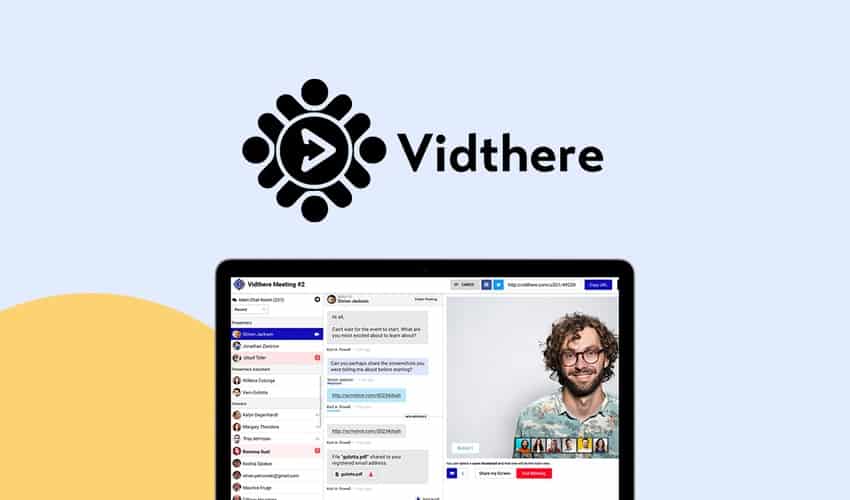Do you feel a little bit spammy whenever you publish a new post on your blog? Are your conversion rates low? Well, to get a lot of quality traffic, you need high-performing, strong content. Obviously, it would provide the viewers with a good reason to engage. Buckle up, we are going to reveal seven content types with the highest conversion rates.
How Do We Know?
To identify the best content for growing conversions, the data provided by Lead Generation to Increase Conversions survey will be used. According to this report, 255 marketing influencers from both B2B (46 percent) and B2C (31 percent), as well as hybrid companies have participated.
The Results
The report found seven content types that performed the best, including research reports, video/motion graphics, social media content, webinars/webcasts, website articles/blogs, case studies/whitepapers, and infographics.
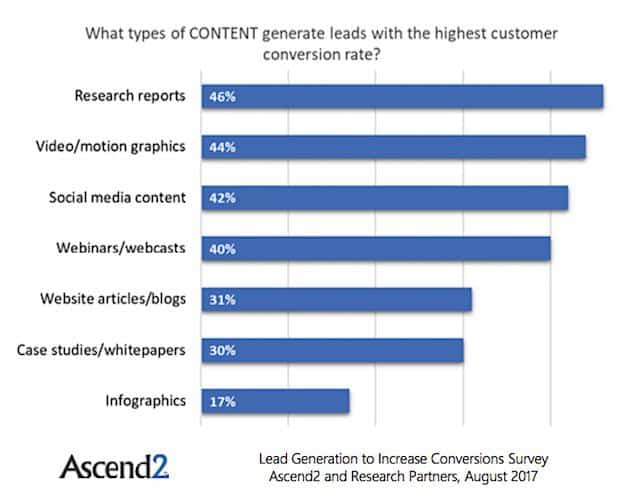
Now, let’s review each of these types of content to see how they engage viewers.
1. Research Reports (46 percent)
Lots of people are looking for reliable data from their industries. A research report is a compilation of interesting insights and expertise. That means it’s a great content type for getting conversions. It is therefore not surprising why so many websites offer free industry reports in exchange of contact data of viewers.
2. Video/motion graphics (44 percent)
Insivia claims 55 percent of people watch videos online every day. eMarketer supports this claim with the results of the survey of U.S. adults. The survey was aimed to determine how much time adults devote to viewing videos on digital devices. According to this survey, an average adult spent about 5.5 hours doing that (1 hr 16 min on mobile plus 4 hr 15 min on other devices). The popularity of videos is explained by the fact that they include interactive elements and establish a conversation with the viewer, thus creating engagement.
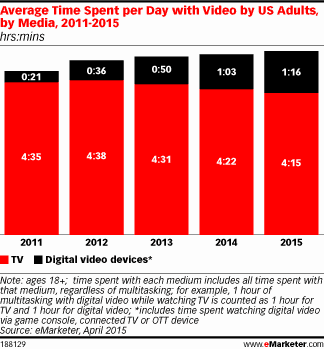
3. Social Media Content (42 percent)
According to Neil Patel, the highest performing content on social media has images, evokes strong positive emotion, and it is shareable. For generating effective social media content ideas, it’s essential to understand that image-rich content is more popular because most of the people on the planet are visual learners. So regardless if you’re snatching your images from Pixlr, Yay Images or Stock Unlimited, they must be on point to keep your visitors’ attention.
That’s why social media posts that feature high-quality images perform better, as shown on this Twitter example:
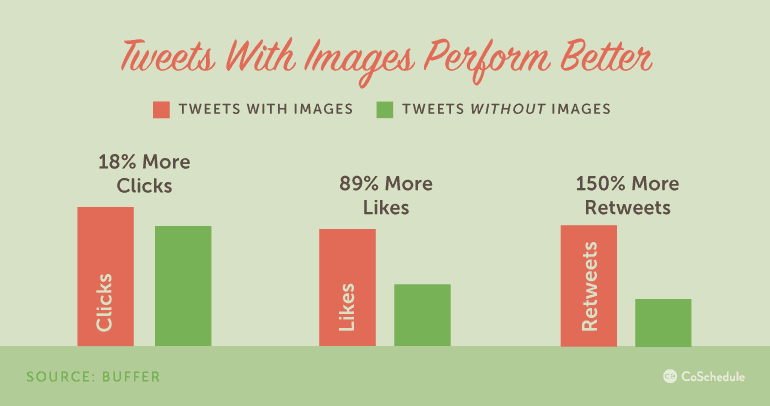
You can also bolster these effects even more by using PPC to retarget potential customers and move them through your sales funnel. Review these social media advertising prices to see if it can work within your budget.
4. Webinars/Webcasts (40 percent)
Many people prefer Webinars instead of in-person seminars because it’s more convenient. Moreover, every attendee has an opportunity to participate more in interactivities such as Q&A and polls.
For example, polls are popular because people like to share their thoughts and opinions, so you can use them to increase conversions. There are live webinars, on-demand webinars, audio webinars, and video webinars. Here are tips for conducting webinars and webcasts from 2016 Webinar Benchmarks Report from ClickMeeting that gathered data from 554,060 events:
- Best day to conduct webinars and webcasts: Tuesday, Wednesday, and Thursday.
- Great time to run them: 10:00 am – 2:00 pm
- Ideal Days to Send Invitations: Tuesday, Wednesday, and Thursday
- Average webinar length: 56 minutes
- Audience engagement and interactivity: group chat – 53 percent, polls – 4.6 percent, Q&A – 3 percent.
Hosting webinars may be swimming in unknown waters, but the process is easily converted into a walk in the park with a plugin like Vidthere. This little tool allows you to create, schedule and host webinars with multiple customizations and features, with basically 0 technical skills required.
5. Website Articles (31 percent)
As a blogger, this might be the primary type of content you use to engage visitors. To ensure that your articles will be enjoyed by the audience, follow these tips:
- Write about your target audience’s main interests. Meeting their information needs should be the main goal of your content strategy. For example, if your target audience is college students, you can write about time management strategies help them succeed in college paper writing and working part-time.
- Include images and other visual aids. We already know that articles with images get more views than those without them, and the difference is about 94 percent, Jeff Bullas claimed.
- Support your claims with data. You cannot know everything, so use knowledge of experts in your industry to increase the credibility of your content.
- Don’t let ads obscure your content. No reader will find your blog legitimate if ads interfere with reading.
To ensure maximum engagement on your website, you should introduce additional optimizations and strategies, such as exit intent popups.
6. White Papers/Case Studies (30 percent)
White papers are popular tools for generating leads because they are right on the edge between promotion and education, thus viewing yourself as an influencer and a thought leader. An IT survey completed by IDG, for example, found that 72 percent of web programmers and designers found white papers extremely useful.
More evidence of the effectiveness of white papers is presented by 2017 B2B Content Marketing Trends report that found they were among the critical tactics for reaching content marketing success.
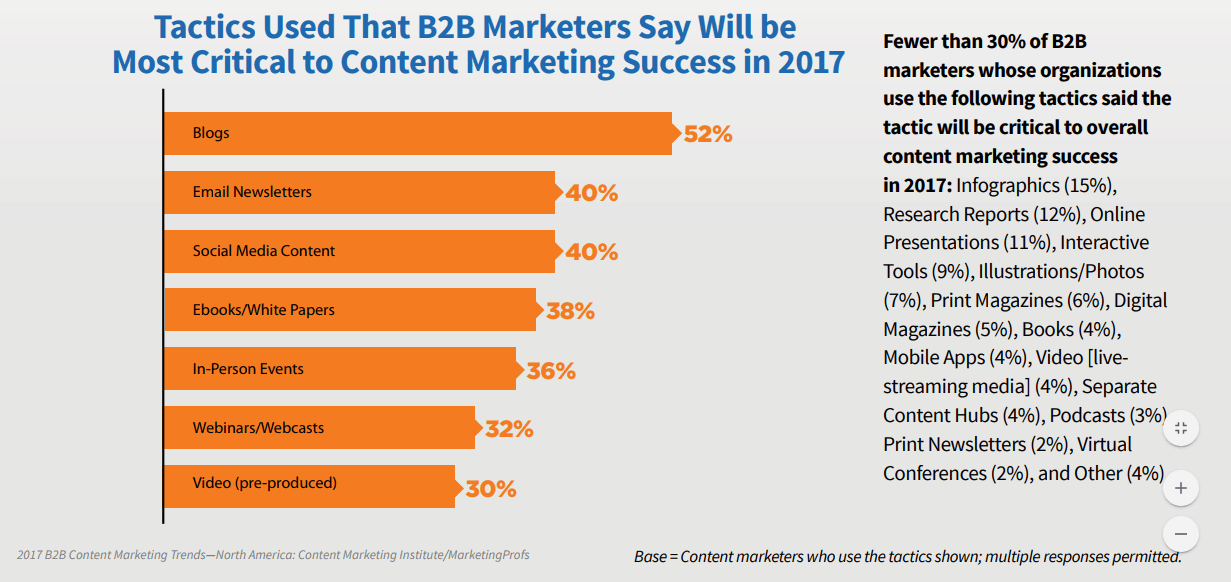
So, if you complete a white paper on an issue in your industry, many people will want to know the results, so you will generously and proudly give it to them. Eventually, you will generate credibility.
Here are basic recommendations to follow when writing a white paper:
- Use a topic your target industry will want to read
- Be professional and highly descriptive (write in a conversational tone!)
- Don’t make it sound like a sales pitch
- Let readers know the value of the white paper
- Proofread
What about case studies?
Case studies are another great way to hit high conversion rates because they provide knowledge on specific business methods, strategies to resolve issues, and so on. You can create case studies on almost anything. For example, if you write about blogging, here are some possible case study topics you can create:
- Learn How Company X increased their website’s traffic by 200 percent in two months
- How to use video to create a more compelling advertising
- The way Company X drove holiday sales with email marketing
Expert Tip: get personal with case studies. If you make them “match” your blog’s audience characteristics, you’ll make them more powerful. For example, if the majority of your visitors come from Canada, you should create a case study about a company from this country.
7. Infographics (17 percent)
These are an awesome method for sharing data points in a visual way. High-performing infographics solve a problem by focusing on a solution. Of course, the problem should be familiar to your blog’s target audience, so they would find an infographic interesting.
Here is a brief guide to creating engaging infographics:
- Brainstorm possible topics. Aim for unique topics related to your industry
- Research some great examples. Visually and Visme have great collections of infographics for you to browse and get inspired
- Design it and promote it on your blog, social media page, and through partners.
Wrapping Up
Hope you enjoyed reading about content that can get you higher conversion rates. Let them be useful and help you become a wealthy blogger!

